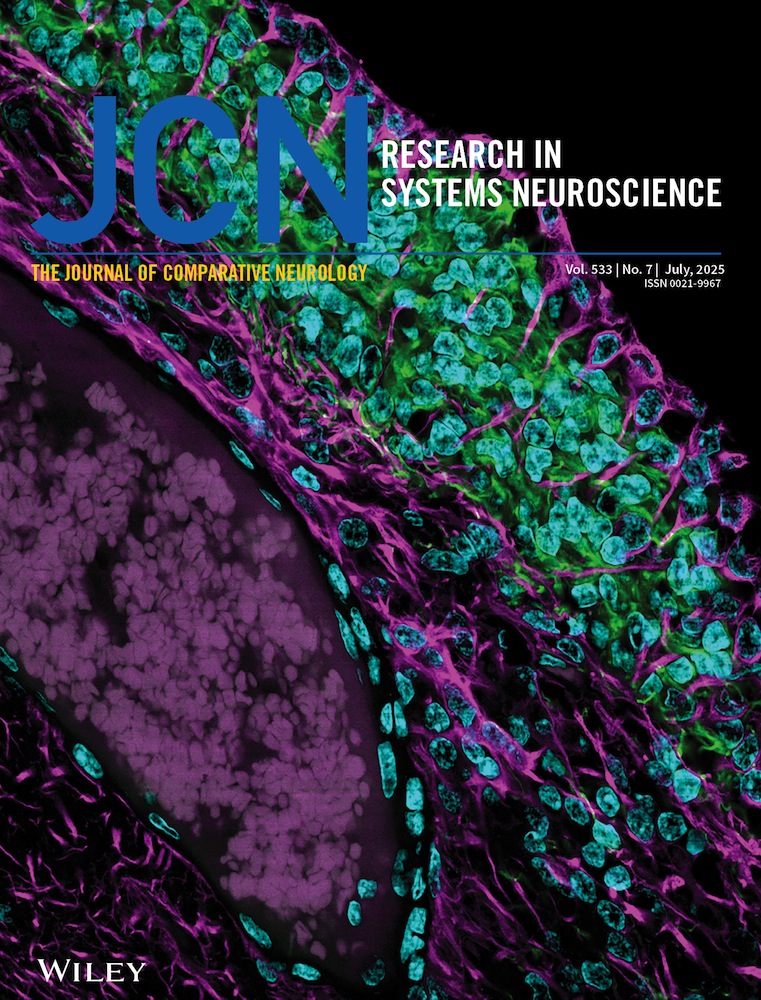Neuropeptide-Like immunoreactive cells in the retina of the larval tiger salamander: Attention to the symmetry of dendritic projections
Abstract
Light microscopic immunocytochemistry was used to study the morphology of cells that showed immunoreactivity (IR) to antisera against substance P (SP), glucagon (GLU), met enkephalin (ENK), and somatostatin (SS) in the retina of the larval tiger salamander. Both vertical sections and retinal whole mounts were studied. All four antisera labeled amacrine cells in the inner nuclear layer and cells in the ganglion cell layer (GCL). GLUIR cells had processes stratified throughout the inner plexiform layer (IPL), whereas the other three types had bistratified projections in laminae 1 and 5, withlamina 5 being broader and more dense. Two types of SS-IR amacrine cell were observed. As seen in retinal whole mount, most GLU-IR and ENKIR amacrine cells had processes that were symmetrically distributed about the soma, whereas processes of SS- and SP-IR amacrine cells were markedly asymmetrical. The dendritic fields of SP-IR amacrine cells were selectively oriented toward the periphery of the retina in the nasal, temporal, and dorsal areas. Immunoreactive cells in the GCL had fine projections into the IPL and in addition gave rise to two large oriented processes proximal to the soma that projected in opposite directions for 100–200 μm. The oriented processes often showed further branching; they appeared to be along the radiated lines from the optic disc but did not enter it. The implications of the selectively oriented processes of SP-IR amacrine cells and cells in the GCL are discussed.




